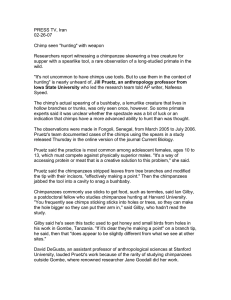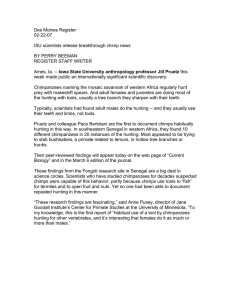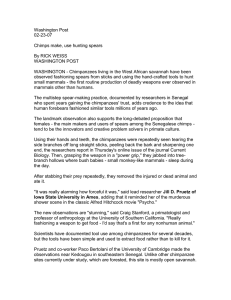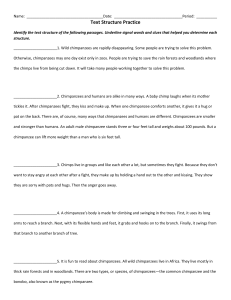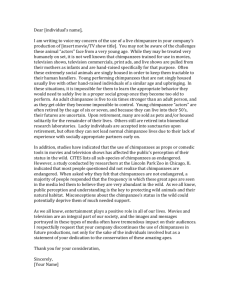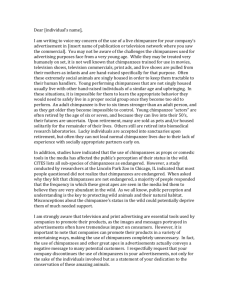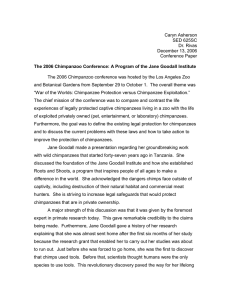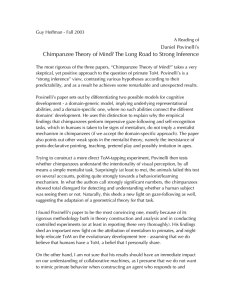Synapse, CA 03-07-07 Chimps Branch Out in Tool-Making
advertisement
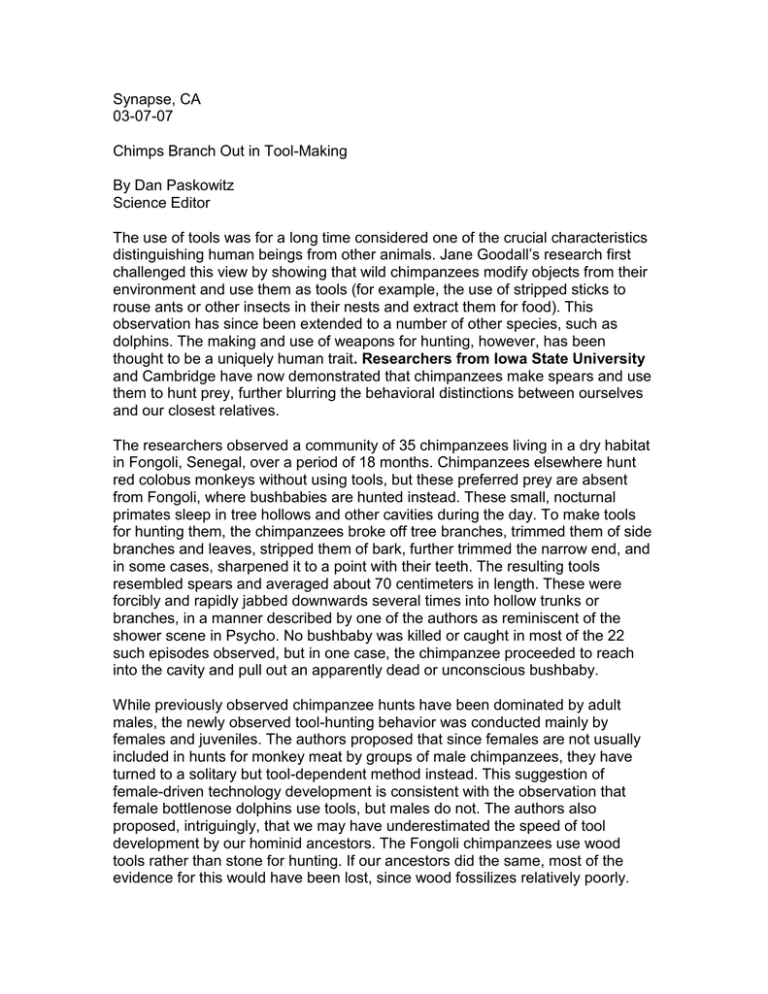
Synapse, CA 03-07-07 Chimps Branch Out in Tool-Making By Dan Paskowitz Science Editor The use of tools was for a long time considered one of the crucial characteristics distinguishing human beings from other animals. Jane Goodall’s research first challenged this view by showing that wild chimpanzees modify objects from their environment and use them as tools (for example, the use of stripped sticks to rouse ants or other insects in their nests and extract them for food). This observation has since been extended to a number of other species, such as dolphins. The making and use of weapons for hunting, however, has been thought to be a uniquely human trait. Researchers from Iowa State University and Cambridge have now demonstrated that chimpanzees make spears and use them to hunt prey, further blurring the behavioral distinctions between ourselves and our closest relatives. The researchers observed a community of 35 chimpanzees living in a dry habitat in Fongoli, Senegal, over a period of 18 months. Chimpanzees elsewhere hunt red colobus monkeys without using tools, but these preferred prey are absent from Fongoli, where bushbabies are hunted instead. These small, nocturnal primates sleep in tree hollows and other cavities during the day. To make tools for hunting them, the chimpanzees broke off tree branches, trimmed them of side branches and leaves, stripped them of bark, further trimmed the narrow end, and in some cases, sharpened it to a point with their teeth. The resulting tools resembled spears and averaged about 70 centimeters in length. These were forcibly and rapidly jabbed downwards several times into hollow trunks or branches, in a manner described by one of the authors as reminiscent of the shower scene in Psycho. No bushbaby was killed or caught in most of the 22 such episodes observed, but in one case, the chimpanzee proceeded to reach into the cavity and pull out an apparently dead or unconscious bushbaby. While previously observed chimpanzee hunts have been dominated by adult males, the newly observed tool-hunting behavior was conducted mainly by females and juveniles. The authors proposed that since females are not usually included in hunts for monkey meat by groups of male chimpanzees, they have turned to a solitary but tool-dependent method instead. This suggestion of female-driven technology development is consistent with the observation that female bottlenose dolphins use tools, but males do not. The authors also proposed, intriguingly, that we may have underestimated the speed of tool development by our hominid ancestors. The Fongoli chimpanzees use wood tools rather than stone for hunting. If our ancestors did the same, most of the evidence for this would have been lost, since wood fossilizes relatively poorly. Our stone-dominated picture of human tool development may therefore be missing much of the story. The new report can be found online at www.currentbiology.com/content/future and will appear in the March 6 issue of Current Biology.
